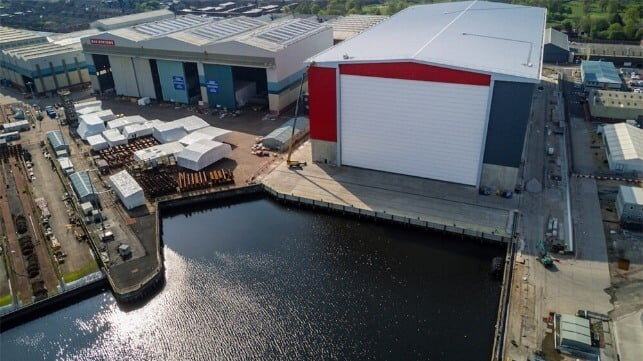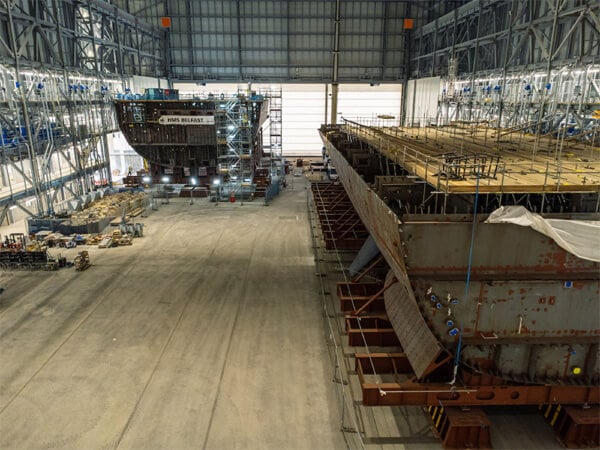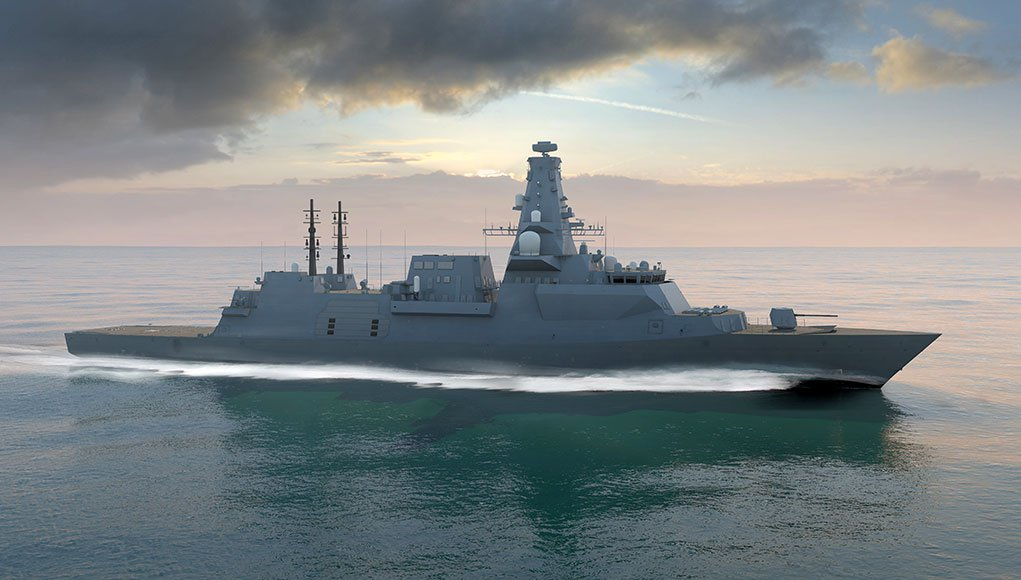British defense group BAE Systems is expanding capacity with a new indoor assembly and outfitting shop at its shipyard in Glasgow, Scotland, which it says will help ensure timely delivery of the next generation of warships for the Royal Navy.

The new facility is part of a £300 million (approximately RMB 2.95 billion) modernization and digitization project at BAE Systems’ Glasgow shipyard. The workshop is named after Janet Harvey, a female electrician who worked during World War II.
The workshop can accommodate up to 500 workers per shift and will enable the shipyard to build warships in a fully enclosed environment for the first time, completely eliminating the impact of adverse weather conditions on construction. In addition to a series of infrastructure and automation improvements, the company has also introduced digital technologies such as tablet computers and self-service terminal screens into the workshop to simplify processes. The new facility will optimize scheduling, shorten ship delivery intervals, and significantly increase BAE Systems’ production capacity.
BAE Systems emphasized that the new facility is a strategic component of the plan to build eight Type 26 frigates for the Royal Navy. The 170-meter-long, 80-meter-wide workshop is equipped with two 100-ton cranes and two 20-ton cranes, providing ample space to meet the demand for the construction of two frigates side-by-side.

Stephen Charlick, Type 26 Resident Project Officer, said, “Janet Harvey Hall has introduced an advanced shipbuilding and outfitting model that ensures quality throughout the entire construction process. This model will help ensure that the ships are delivered on schedule in accordance with the Royal Navy’s requirements.”
It is understood that in November 2022, BAE Systems signed a £4.2 billion contract with the UK Ministry of Defense to build five Type 26 warships. Previously, the two parties had signed a contract to build three ships of the same type. All eight frigates will be built at the Govan and Scotstoun shipyards.
According to previous reports, at the end of 2023, the Royal Navy’s program to build five Type 26 frigates in Scotland faced a risk of further delays due to plans by shipyard workers to strike in early 2024 over pay and working conditions. The House of Commons Defense Committee stated in July 2023 that the delay costs of the program had reached as high as $300 million, putting additional pressure on the already strained Royal Navy budget. The project’s delivery delays and cost overruns have long been criticized by institutions such as the UK Parliament’s Defense Committee.
The Type 26 frigate is known as one of the most advanced warships in the world. It is designed for anti-submarine warfare and high-intensity air defense. It can quickly switch missions and undertake functions such as large-scale humanitarian aid transportation and medical facility deployment.

Currently, the “Belfast” and “Birmingham” ships of the Type 26 frigate class are under construction, while the ‘Glasgow’ and “Cardiff” ships are undergoing outfitting at the Scotstoun shipyard on the upper reaches of the River Clyde. The fifth ship, the “Sheffield,” has also begun construction. It is estimated that the construction of these warships will provide 1,700 jobs in Scotland and 2,300 jobs across the UK’s broader supply chain.
It is reported that the UK’s Type 26 frigates are advanced warships primarily designed for anti-submarine warfare, aimed at protecting the country’s ongoing maritime nuclear deterrent and aircraft carrier strike groups. Eight Type 26 frigates are intended to replace the aging fleet of 12 Type 23 anti-submarine frigates. The first three vessels (“Glasgow,” “Cardiff,” and “Belfast”) are scheduled for delivery by 2030, with the remaining five set to join the fleet after 2030.
The frigate can accommodate a crew of 208 and will be equipped with a range of advanced capabilities, including the Sea Ceptor missile defense system, a 5-inch medium-caliber naval gun, a flexible mission bay, the Artisan 997 medium-range radar, and a towed array sonar. It will also be fitted with future cruise/anti-ship weapon capabilities.


